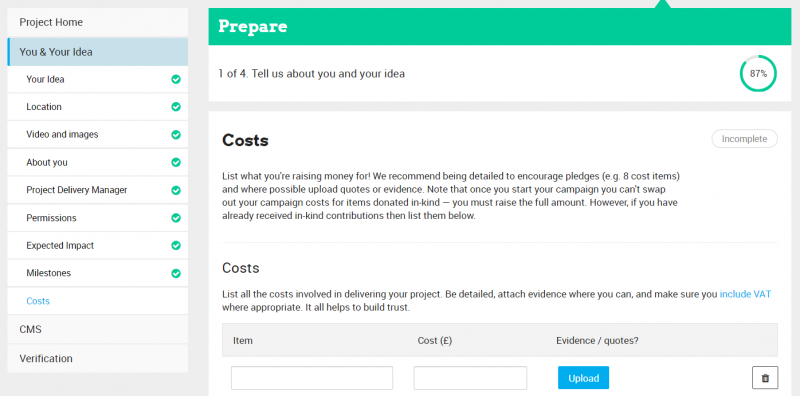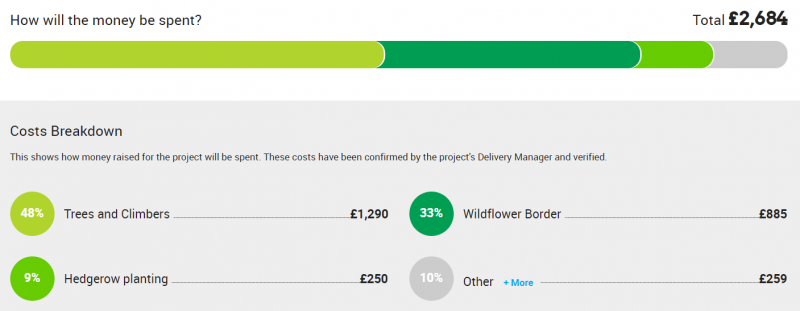As part of creating your project on Spacehive you will sooner or later have to start detailing its costs. This can feel like an intimidating task. You may have had an idea, and enthusiastically come to Spacehive and started filling in the sections about what it is and why it’s great. The costs section is a bit like the first ‘oh, this is real’ part. It’s where you will be forced to think in more detail about what you are actually proposing to deliver. The good news is that by doing this thinking, you will come out with a much clearer idea about your project. It’s common to end up finishing the costs section and then going back and amending previous sections, armed with newfound clarity about your project.
Put simply, before you start crowdfunding we want to know how much your project will cost. The easiest way to do this is to list the different items one by one that make up your project. These will be added up to give you a final project total: the amount you’ll be crowdfunding.
You do not need a Masters in Business Administration or be an experienced fundraiser to complete the costs section on Spacehive (see the screenshot below which shows you what it looks like). You just need to know the different items that you will require in order to deliver your project, and then how much they will cost. Make sure you give your cost item a clear and obvious name, as this is how it will appear on your public facing project page. You’ll also have to upload evidence (check out our list of the types of evidence that are accepted) for each of your cost items to show that you have priced it up accurately (this part is vital for getting your project verified!) Any documents you upload here will only be visible to yourself and Spacehive. If you don’t have supporting evidence, there is a box available for each item to explain why you do not have it. Your reason will be considered by the verification team at Locality (FAQ: what is verification). Your costs will be reviewed to test that it is a) accurate and b) credible in order to deliver the project as described.

You don’t need to have a certain number of items. It’s just about what’s true for your project. Look at this example of a project that crowdfunded to create a small growing space on a council estate:

Straightforward, isn’t it? Some projects are a bit more complex and have different types of costs, such as labour time. Here’s an example where these costs are listed clearly:

Think about your costs and use your judgement as to how much you have to break them down. You want to be transparent so that potential backers know what you are crowdfunding for. However you don’t need to list every pen and pencil that you will purchase.
To summarise:
- Anyone can write a project budget!
- List all the individual cost items and use clear language for each one
- Upload supporting evidence for each cost item to demonstrate how you arrived at that figure
- Split out your costs so that you are transparent about where funds will be spent, but don’t overdo it
Now you’ve seen these examples and know a bit more about how to approach the costs section, click on the article below which goes into more detail about the different costs that are associated with community projects, and which ones you might want to include when thinking about yours.
/crowdfunding-101-writing-a-budget/

